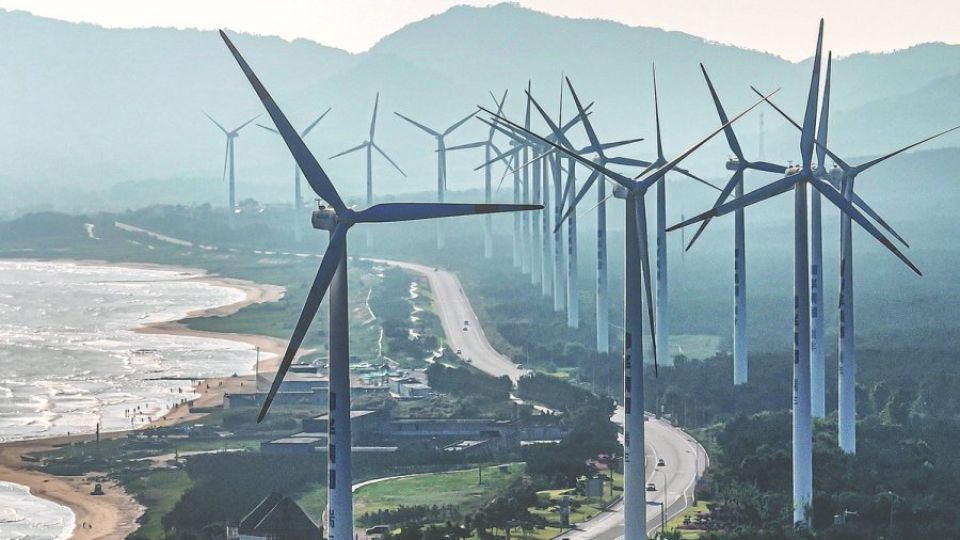December 4, 2023
BEIJING – Installed capacity of China’s renewable power reached a record high in October at 1.4 billion kilowatts, up nearly 21 percent year-on-year and constituting nearly half of the country’s total, indicating the country’s accelerated transition to a greener energy structure, experts said.
Meanwhile, energy companies are entering a phase of accelerated competition where technology-driven firms that intensify research investments to enhance product performance and production efficiency will ride the tide, they said.
Data from the National Energy Administration showed on Thursday that hydropower installations had a combined capacity of 420 million kW (conventional hydropower at 370 million kW and pumped storage hydropower at 50.04 million kW), wind power was at 404 million kW, photovoltaic (PV) stood at 536 million kW and biomass power was at 44 million kW.
By the year-end, the total capacity of renewable energy installations in China is expected to exceed 1.45 billion kW, with wind and PV capacities surpassing 1 billion kW collectively, the NEA said.
Zou Ji, CEO of non-profit organization Energy Foundation and president of EF China, said that the country leads the global production capacity and market share in multiple areas of new energy, such as PV, offshore wind energy, batteries, electric vehicles and ultra-high-voltage direct current transmission.
“China is responsible for more than 75 percent of the global PV supply chain, and its export volume of such products has increased significantly in accordance with global growth,” said Jiang Yali, a solar analyst at energy research provider BloombergNEF.
Driven by China’s decarbonization goals and buoyed by increasing market demand, China has a complete life-cycle supply chain in PV facility manufacturing, enjoying an obvious scale effect. Meanwhile, the technology of PV power generation is developing rapidly, which greatly promotes cost reductions, giving the country a leading role in the global PV supply chain, Jiang said.
Zou said China’s most new energy related technical capabilities have reached an internationally competitive level with relatively low costs. He said that companies have continuously increased investments for technological advancement and market expansion.
Zou pointed out that China’s rapid development in the new energy industry is supported by a robust manufacturing sector. However, currently, industries such as power batteries and other low-carbon-related equipment manufacturing sectors are experiencing short-term overcapacity issues.
To stay competitive, experts suggested enterprises should intensify research investments, focusing on product quality improvement and efficiency.
“While the new energy industry is poised for continued high growth in 2023, it faces a series of challenges. Prices in the photovoltaic and energy storage industry chains are consistently decreasing, indicating periods of temporary overcapacity,” said Zhu Gongshan, chairman of Golden Concord Holdings Ltd, a major PV company.
“However, overcapacity is a natural phase in market economies. Facing competition while being prepared for potential elimination is an integral aspect of industry evolution,” Zhu said.
He further said that as the renewable energy industry gears up for a shakeout, those hinged on specialized products and high-quality development driven by technological innovation will stand out, adding that enterprises should intensify research efforts.


